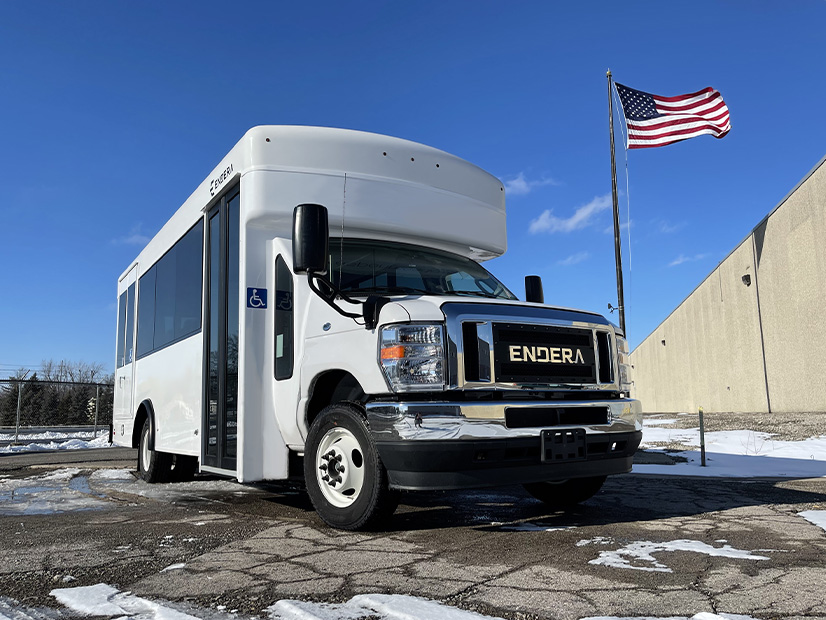
The first legislative hearing on an Ohio bill designed to jumpstart the production of electric vehicles and EV components in the state drew cautious questions from some members of the Senate’s Energy and Public Utilities Committee on Tuesday.
Sponsored by Sen. Michael Rulli (R) — who represents the greater Youngstown area, a former steel manufacturing center — the bill would provide job training funding and incentives for companies building production facilities in the state.
S.B. 307 would also provide state sales tax exemptions of $2,000 to those who lease or buy EVs, $1,000 for people or companies buying or leasing used EVs, and $1,000 for those buying or leasing new plug-in hybrids.
The sales tax exemptions alone could cost the state between $55 million and $70 million annually, according to the Ohio Legislative Service Commission’s analysis. Most of that money would have gone into the state’s general fund.
The bill would appropriate $15 million in general revenue funds in 2022 and 2023 fiscal years for manufacturing retooling and new equipment. It would provide $10 million for retraining during those initial fiscal years.
The legislation would also create a new charge on business and consumer electric bills, subject to approval by the Public Utilities Commission — to allow distribution utilities to recover the cost of new “transportation electrification programs.”
In initial remarks when he introduced the bill a week ago, Rulli said the stakes were too high for Ohio to ignore the transformation of the auto industry because the switch to electric systems would eliminate many of the state’s 108,000 auto and auto parts jobs.
“The auto industry is going through a global transition,” he said. “Manufacturers have pledged to invest $330 billion on electric vehicles production by 2025. This means they are making decisions right now about where to build new factories and which of the existing factories will transfer to EV production. Companies are making decisions about where the next generation of auto manufacturing jobs will be. I want that to be right here in the Buckeye State.”
At Tuesday’s hearing, Sen. Jerry Cirino (R) asked whether the state would need more “baseload capacity” by 2035, a year when General Motors has announced it will build only EVs. “I’m just concerned about the ability to provide the baseload power to charge all of these vehicles, whether they’re fast- or slow-charging batteries,” he said in a question to John Walsh, CEO of Endera, an EV manufacturer that last year opened a manufacturing plant for commercial EVs in western Ohio.
“We design our charging infrastructure deployments to charge in times when no one needs power, so we charge at night,” Walsh responded. “That’s one element. The second element is that we have what’s called battery energy storage stations. So, there are batteries actually coupled with the charging stations themselves, that consume power when there’s excess power, and they charge the vehicles when there’s a high demand for power.”
Sen. Andrew Brenner (R), owner of a plug-in hybrid, said he has noticed his electric bill has gone up slightly since purchasing the vehicle and wondered what the impact would be when more Ohioans have plug-ins over the coming decade.
“We have 4,650,000 cars sold annually in the state. … Less than 2% of all cars are electric, which would make about 93,000 cars in the state [that are] electric of some sort,” he said. “I realize this bill is trying to build up capacity for competition for a market. I’m just not sure I’m convinced given the fact that there are very few electric charging stations. Just to scale this up would seem to be a herculean task. What happens if you go from, say, 93,000 cars getting charged to 465,000 cars, which is 10%, or 20% at 930,000 cars per day getting charged?
“These are economies of scale that I’m not really sure we can get to with the current setup and the way the batteries are and the way the charging is for literally everything that needs to happen, let alone the infrastructure needed to build all those cars,” he said.
A current electrification rider on the bills of customers of the state’s AEP Ohio (NASDAQ:AEP) customers is costing residential customers 12 cents/month and business customers 62 cents/month. That rider pays for 375 network-connected smart EV charging stations.
Philip Dion, AEP chief customer officer, spoke in favor of the bill, saying that production of EVs in Ohio would not likely lead to an insurmountable increase in demand because most EVs would be purchased on the west and east coasts before Ohioans would buy them.
But lawmakers wanted to know just when demand would surge in Ohio.
“I think what you will see is that there will be a need on the distribution system, to enable us to balance the system,” he said, adding that the company could offer time-of-use rates and technology to allow it to control when EV charging could occur in order to avoid an immediate buildout of its distribution system.
“But make no mistake, I’m not avoiding your question,” Dion said. “We’re going to use more electricity. We’re going to need more infrastructure to meet that. The balancing, though, is our job, especially as the operators of the grid are sort of the traffic cop. It’s our job to work with the government.”
